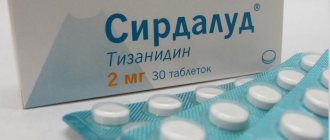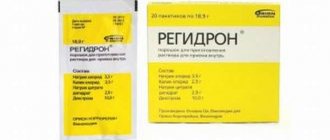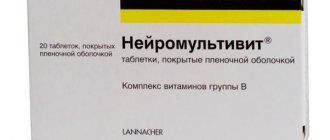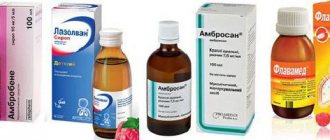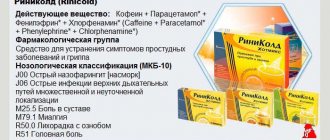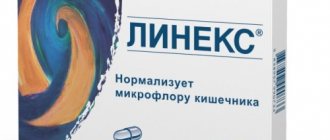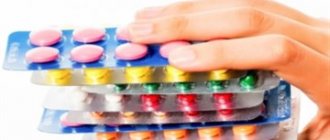Photo: zhivika.ru
Photo: evacsgo.ru
Photo: slide-share.ru
Photo: yandex.ru
Cefazolin is an antibiotic of the cephalosporin group for parenteral use. Has a bactericidal effect.
Cefazolin injections are indicated for infectious and inflammatory processes: diseases of the upper and lower respiratory tract, urinary and biliary tract, bones and joints, otitis media, burn infections.
Pharmacodynamics and pharmacokinetics
The pharmacological effect of the drug is based on blocking the biosynthesis of microbial cell walls. The antibiotic Cefazolin is active against gram-positive (Streptococcus spp., Staphylococcus spp.) and gram-negative bacteria (Klebsiella spp., Escherichia coli, Treponema spp., Haemophilus influenzae, Proteus mirabilis, Neisseria gonorrhoeae, Enterobacter aerogenes).
The drug is poorly absorbed from the gastrointestinal tract when used internally, therefore it is used for intravenous and intramuscular injections . After intramuscular injections at a dosage of 0.5 g, the maximum concentration is observed after 1-2 hours. Plasma protein binding is approximately 85%.
The active substance of the drug penetrates bone tissue, as well as pleural , ascitic and synovial fluid , but is not detected in the nervous system.
The half-life of the drug is approximately 1.8 hours. The drug is excreted unchanged in the urine.
With intramuscular injections, about 80% of the dose is eliminated after 24 hours. In case of renal dysfunction, the plasma half-life increases.
Pharmacological properties of the drug Cefazolin
Pharmacodynamics. Cefazolin has a wide spectrum of antimicrobial (bactericidal) action. Active against gram-positive microorganisms ( Staphylococcus spp ., producing and not producing penicillinase, most strains, including pneumococci, Corinebacterium diphtheriae ); gram-negative microorganisms ( Escherichia coli, Salmonella spp., Shigella spp., Proteus mirabilis, Klebsiella spp., Haemophylus influenzae, Enterobacter aerogenes, Neisseria gonorrhoeae ). Indole-positive strains of Proteus ( P. morgani, P. vulgaris, P. rettgeri ), Pseudomonas aeruginosa are resistant to the antibiotic; does not affect rickettsia, viruses, fungi, protozoa. Like penicillins, it inhibits the synthesis of bacterial cell walls. Pharmacokinetics. When administered intramuscularly, the drug is rapidly absorbed, reaches a maximum concentration in the blood after 1 hour and is retained in an effective concentration in the blood plasma for 8–12 hours. It is excreted mainly (approximately 90%) by the kidneys unchanged. Penetrates through the placental barrier into amniotic fluid and umbilical cord blood. Found in very low concentrations in breast milk. The drug penetrates well through the inflamed synovium into the joint cavity. With intravenous administration, a higher concentration is formed in the blood, but the drug is released faster (half-life is about 2 hours).
Indications for use of Cefazolin
Indications for use of Cefazolin are as follows:
- infections of the biliary and urinary tract ;
- infectious diseases of the respiratory tract;
- inflammation in the abdominal cavity and pelvic organs;
- blood poisoning;
- peritonitis and sepsis ;
- skin infections after burns, surgeries and wounds;
- inflammation of the lining of the heart;
- and joint infections ;
- venereal diseases;
- infectious skin diseases;
- mastitis.
For what purpose the drug will be effective in each individual case, it is necessary to consult a specialist. Only a doctor knows the exact indications for the use of Cefazolin. For example, he may recommend a drug for sore throat , skin infections , or blood poisoning .
The medicine is also used in veterinary practice for cats. Injections help with blood poisoning , peritonitis , meningitis , as well as many infectious diseases .
What does it help with?
Cefazolin treats respiratory and digestive diseases. It belongs to the category of semi-synthetic antibiotics, so the medication is prescribed for diseases accompanied by an inflammatory process. Cefazolin, indications for use:
- inflammatory processes in the urinary and gall bladder (pyelonephritis, cystitis, urethritis);
- mastitis;
- skin infections (lichen, measles, rubella, chicken pox, herpes);
- infections of joints and bones (osteomyelitis, bursitis, dropsy, synovitis, tendonitis);
- inflammatory process of the heart membranes (pericarditis, endocarditis);
- skin inflammation caused by burns or wounds;
- sepsis;
- inflammatory process in the abdominal cavity;
- abscess;
- gonorrhea;
- candidiasis;
- inflammation of the pelvic organs in women (vaginosis, vaginitis) and men (prostatitis);
- infections of the digestive system (balantidiasis, gastritis);
- respiratory infections (laryngitis, tracheitis, tonsillitis, laryngotracheitis).
If a relapse occurs after Cefazolin (solution), the medication is re-prescribed, maintaining an interval of 10 days between courses.
Contraindications
The drug has virtually no contraindications, with the exception of individual intolerance to the active ingredient.
The medication is not prescribed to children in the first month after birth.
Is it possible to inject at a temperature
Many patients are interested in whether it is possible to inject Cefazolin at a fever. Experts answer this question positively.
Temperature jumps signal inflammation, the development of which is triggered by bacteria. Cephalosporin antibiotics provide a pronounced anti-inflammatory effect.
Side effects
Using the medication may cause the following side effects:
- organs of the digestive system: diarrhea , nausea, vomiting;
- chemotherapeutic effect: candidiasis , pseudomembranous colitis ;
- allergies : urticaria , eosinophilia , itching , fever ;
- local reactions: pain at the site of intramuscular injection.
In rare cases, there is a transient increase in the activity of liver transaminases , anaphylactic shock , arthralgia , angioedema , leukopenia (reversible), thrombocytopenia , neutropenia , renal dysfunction .
Instructions for the use of Cefazolin injections (Method and dosage)
When Cefazolin injections are prescribed, the instructions for use indicate that the dosage and duration of the course may vary depending on the disease and the individual sensitivity of the patients. Daily dosage for adults is from 1 to 6 g. Injections are given 2-3 times daily. Therapy is designed for a maximum of 7-10 days.
The drug is administered intramuscularly or intravenously . Depending on this, they decide how to dilute Cefazolin. When intramuscularly , the medicine is diluted with water or sodium chloride solution. For intravenous injections, sodium chloride is mainly used. In this case, the drug is administered slowly. Administration time is approximately 5 minutes.
If a patient is placed on a drip , the antibiotic is usually diluted with glucose, and sodium chloride is used only in rare cases.
For the treatment of inflammation of the lining of the heart, joints, purulent pleurisy , bones, abdominal cavity, blood poisoning , 1 g of the drug is administered 3 times every day. In case of kidney dysfunction, the dosage should be halved.
The drug cannot be combined in the same syringe with other antibiotics .
In addition to water and sodium chloride, the medicine is also sometimes diluted with Novocaine . It is topical anesthetic This drug has been used in medical practice for quite a long time, so there is an established scheme for diluting Cefazolin with Novocaine . The latter is taken at a concentration of 0.25%. Before diluting this drug with Novocaine It is enough just to add 2-3 ml to the antibiotic and then shake well. The result is a ready-made solution for single use.
For some indications, the drug is also used in veterinary practice instead of using tablets. In this case, it is diluted in Lidocaine or Novocaine . The dosage for cats depends on the weight of the pet, it is calculated so that 10 mg is per 1 kg. Therapy lasts 5-10 days. Before using the medicine, you should consult your veterinarian.
Cefazolin Akos is often used as an analogue of the drug for humans . It is also administered through intramuscular and intravenous injections (stream and drip). Instructions for use of Cefazolin Akos reports that the average daily dosage for adults is 1 g. They need to be administered 2 times a day. The maximum dose per day should not exceed 6 g. If necessary, the frequency of use can be increased to 3-4 times a day. The average duration of therapy is 7-10 days.
The average daily dosage for children is 25-30 mg/kg, and in case of severe infections - 100 mg/kg.
In case of renal dysfunction, doses are adjusted.
For intramuscular injections, an antibiotic in a dose of 500 mg is mixed with 2 ml of water, 1 g is diluted in 2.5 ml of water. For intravenous administration, the medicine is mixed with 5 ml of water and administered for 3-5 minutes.
special instructions
Cefazolin should be used with caution in patients with impaired renal function according to indications. In such cases, individual selection of the dosage and intervals between administrations of the drug with constant monitoring of the concentration of Cefazolin in the serum is required. If allergic reactions occur, the drug is discontinued and symptomatic treatment is prescribed.
Patients who are hypersensitive to penicillins may experience allergic reactions to cephalosporins.
During therapy with Cefazolin, a false-positive reaction to sugar in the urine may occur.
The use of Cefazolin does not affect the level of concentration and speed of psychomotor reactions, therefore, does not change the ability to drive a car and other mechanisms.
Overdose
Administration of the drug in high doses may cause dizziness , headache and paresthesia . People with chronic kidney failure neurotoxic effects . Convulsions, tachycardia and vomiting are noted.
In case of toxic reactions and signs of overdose, the elimination of the drug can be accelerated through the use of hemodialysis .
Storage conditions and periods
You cannot store diluted Cefazolin for a long time - the solution must be used for its intended purpose immediately. Unopened vials cannot be kept in the refrigerator - sub-zero temperatures will negatively affect the therapeutic properties of the drug. The storage place should be dry and dark. For these purposes, boxes of medicine are laid out in plastic containers and put in a closet.
Shelf life: no more than 24 months. It is important to monitor the temperature - +5...+7°C is considered optimal. To prevent the powder from losing its physical properties, it is recommended to monitor the humidity of the room and the integrity of the bottles.
Interaction
When the drug is combined with aminoglycosides , Rifampicin , Vancomycin , a synergistic antimicrobial effect is observed . Aminoglycosides increase the likelihood of kidney damage. The drug is incompatible with them.
It is undesirable to combine the medication with anticoagulants and diuretics .
Interaction with agents that inhibit tubular secretion increases the level of the active substance of the drug in the blood, increases the likelihood of toxic reactions and slows down the elimination time.
Analogues of Cefazolin
Level 4 ATC code matches:
Cephalexin
The following analogues of Cefazolin are known:
- Cefazex;
- Cefazolin-Astrapharm;
- Cefazolin Acos;
- Reflin;
- Cesolin;
- Cefazolin-Pharmex;
- Cefamezine.
All of these medications are sold in powder form. Common analogues are not available in tablets.
Cefazolin price, where to buy
The price of Cefazolin injections can vary greatly depending on the seller. Ampoules of medicine (1 g) can cost from 20 rubles. The maximum price of Cefazolin for 1 bottle of 1 g reaches 120 rubles.
- Online pharmacies in RussiaRussia
- Online pharmacies in UkraineUkraine
- Online pharmacies in KazakhstanKazakhstan
Pharmacy Dialogue
- Cefazolin (vial 1g i.v. i.m. individual pack) Kraspharma OJSC
40 RUR order
show more
Pharmacy24
- Cefazolin-Darnitsa 1g N5 PrAT Pharmaceutical company Darnitsa, Ukraine
73 UAH order - Cefazolin-Darnitsa 0.5 g No. 5 powder PrAT” Pharmaceutical company “Darnitsa”, Ukraine
55 UAH order
- Cefazolin 0.5 g N10 powder PAT "Kievmedpreparat", Ukraine
94 UAH order
- Cefazolin 1 g N5 solution for injection AT Lekhim-Kharkiv, Ukraine
55 UAH order
- Cefazolin 1 g No. 1 injection solution AT "Lekhim-Kharkiv", Ukraine
12 UAH order
PaniPharmacy
- Cefazolin bottle Cefazolin powder for injection 0.5g bottles No. 5 Ukraine, Darnitsa ChAO
60 UAH.order
- Cefazolin por. d/in 1g No. 5 Ukraine, Lekhim-Kharkov
71 UAH order
- Cefazolin bottle Cefazolin pores. d/r-ra d/in. 1g fl. No. 10 Ukraine, Kievmedpreparat OJSC
124 UAH order
- Cefazolin bottle Cefazolin pores. d/r-ra d/in. 0.5g fl. No. 10 Ukraine, Kievmedpreparat OJSC
93 UAH order
show more
Compound
The drug Cefazolin contains no additional elements that act as stabilizers. The active substance is the component of the same name, the concentration of which is no more than 500 mg in 1 ampoule. Release form: lyophilisate, packaged in light-protective glass bottles.
The containers are hermetically sealed: a rubber stopper is wrapped in soft foil. Cardboard packaging contains 1, 5, 30 or 50 bottles.
